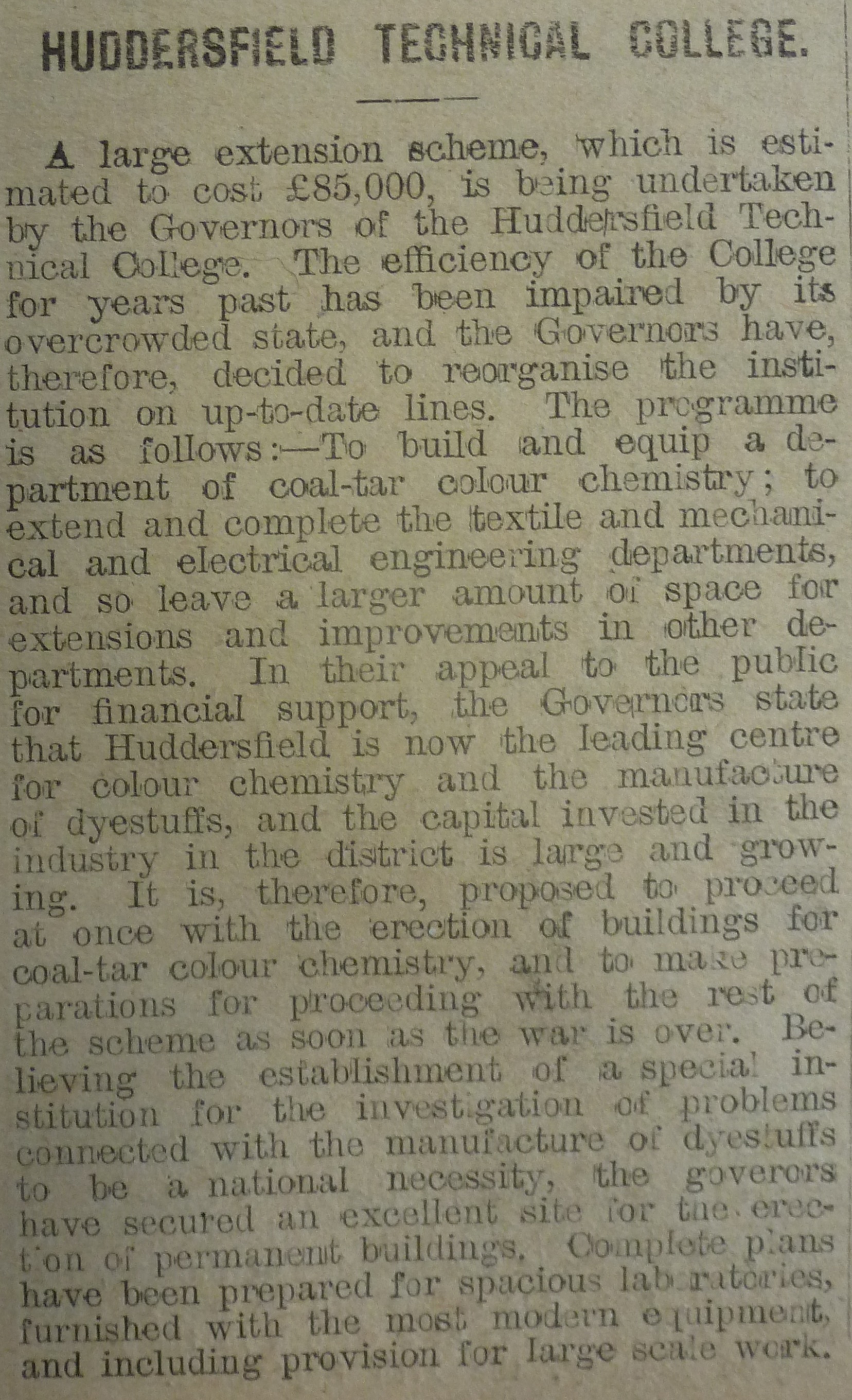Steven uncovers more on the University’s history during WW1

25/2/14: History Blog 3 – Literature and History: Uncovering the University’s role in the First World War.
My name is Steven Jackson and I am currently halfway through my twelve week internship, in the School of Music, Humanities and Media. One of the tasks I have been given, during my internship, is to research what was happening at the University, around the time of the First World War. As I am an English Literature graduate, and I have not got much academic History experience, I have been aided in my quest for knowledge by Dr. Daryl Leeworthy, Dr. Rebecca Gill and the Archives department.
As I mentioned in my previous blog, the task I had been given was to look through the “Colne Valley Chronicle/Guardian” newspaper, for any relevant information, regarding the university. I can say though that my experience of looking through the newspapers was a lot more bearable. It was still an incredibly slow process, and I probably got through about as much of the volume as did the first time. But I have found a lot more interesting facts than I did in the first week, which I am going to elaborate on in this blog.
The first interesting fact I found came from February 23rd 1917.The newspaper spoke of a talk that Dr. Fisher of Sheffield University made regarding an educational reform across the country. Dr. Fisher said that the scheme would develop on broad lines and that authority would be centralised in large, by provisional councils. Dr. Fisher also hinted that each area should have a university and if an area does not have a university, one should be built. Sadly no location was mentioned for this talk, but I found it an interesting development, regarding not only the status of universities, but education, across the country, as a whole. The second piece of information I found though, was very exciting, as it related directly to the university.
In the 30th March 1917 edition of the newspaper, it spoke of a large extension scheme which was in development at the University, with an estimated cost of £85000 (around £3,660,000 in current currency, according to the National Archives money converter). The reason for this extension was student overcrowding at the university, and the article spoke of further extension preparations, for when the war was over. This is probably the most fascinating fact I have found so far.
It is remarkable to see how even back in 1917, the university was developing at a remarkable rate, as it is today. As I found this the most interesting fact, I photograph it for everyone to read and it is at the bottom of this blog post.
The next extraordinary fact I found comes from April 13th 1917. In this edition there was a story related to a Marsden soldier, Corporal Robert Owen, who sadly died in Gaza, Palestine on March 26th 1917. What is interesting about this story though, is that Corporal Owen was a member of the Royal Welsh Fusiliers, one of the battalions the lecturers at the university were part of. Even more exciting is that Corporal Owen had been fighting in Egypt, and that was one of the places some of the university lecturers were sent to, during the war. While Corporal Robert Owen is not directly linked to the university, his story was still an intriguing find and he might help to bring more contextual information to the research, as a whole.
The final piece of information I uncovered, came from the April 20th 1917 edition of the newspaper. In the newspaper’s “Roll of Honour” it named a soldier called Sam Dyson, who used to work for Messrs J and J Bottomley, painters and plasterers in Marsden. During the war, the University employed a lecturer of chain-making called E.J.I. Bottomley. While they may not be relevant, Sam Dyson could be another connection, bringing more information about the university to light.
So to conclude, my second look through the newspapers was much more productive than the first. I found out not only key contextual information, regarding the state of education and soldiers during the war, but also direct articles about the university. From this, it has helped to create an even bigger picture, as to the university’s role, during the First World War, and I cannot wait to share with you, my next set of research, regarding this remarkable project.
